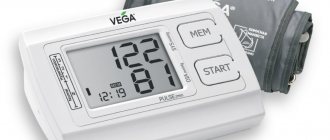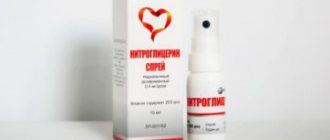One of the most important indicators of human health is blood pressure. Timely detection of decreased or increased indicators allows you to take all necessary measures to prevent the progression of the pathological process. Currently, blood pressure can be measured in the following ways: palpation, oscillometric and auscultatory. Doctors use the latter. Its other name is the Korotkov method. It allows you to identify and record sound phenomena associated with the functioning of certain internal organs.
Korotkoff method: concept
Doctors consider this method of measuring blood pressure to be the most accurate and informative. The Korotkoff auscultatory method has been recommended to doctors by the World Health Organization since 1962.
The essence of the method is to evaluate the sound of the artery under a certain influence on it. Surgeon N.S. Korotkov During the research, he revealed that under pressure of varying strength, specific noises and tones arise in the blood vessel. It was this discovery that formed the basis of the method.
During the study, doctors listen to the artery in the elbow bend, recording those moments during which noises appear and disappear. The Korotkoff method involves the use of a hand-held tonometer equipped with a bulb. The latter is designed to pump air. In addition, the measurement is not complete without a phonendoscope.
How to measure blood pressure with an electronic tonometer
Free your hand from clothing and put a cuff on your forearm or wrist. In the case of a semi-automatic device, the air is pumped by a bulb, while an automatic device does everything itself - you just need to press a button on the control panel. The result can be seen on the screen. It is also allowed to wear a cuff on a sleeve made of thin fabric.
If you use a wrist pressure gauge, be sure to remove your bracelets or watch before measuring your blood pressure. The hand with the cuff on the wrist should be placed palm down on the opposite shoulder, and the elbow rested on the free hand.
Blood pressure is one of the most important characteristics of the functioning of the human body. Its periodic monitoring is necessary when diagnosing or monitoring the treatment of many diseases. Almost any visit to a therapist is accompanied by the determination of this indicator. And measuring blood pressure using the Korotkoff method is the most common way to do this. What are the advantages and disadvantages of this technique?
The term “blood pressure” refers to the force of blood pressure on the arterial walls during maximum contraction (systole) and maximum relaxation (diastole) of the heart muscle, or rather its left ventricle.
The quantitative characteristic is presented in the form of a fractional expression, where the upper part represents the systolic pressure and the lower part, respectively, the diastolic pressure. For convenience, they are often called upper and lower.
The unit of pressure measurement is “mmHg”, that is, millimeter of mercury. The norm for a healthy adult is considered to be 120/80. We can talk about elevated blood pressure in a patient when the threshold of 140/90 mmHg is exceeded.
A constantly high level indicates the development of hypertension; otherwise, hypotension. The pressure characteristic may change its value during the day, but these fluctuations are insignificant. In the case of hypertension, these changes can be serious, which naturally affects the condition of the patients.
High blood pressure indicates hypertension, low blood pressure indicates hypotension.
There are several methods for measuring blood pressure. The main ones are direct methods and indirect ones, also called non-invasive. In the first case, a direct “connection” of the patient to the equipment that reads the indicators is required. To do this, a needle connected to a pressure gauge is inserted into an artery or even into the heart.
To prevent the blood from clotting, drugs are placed inside the device to prevent this process. The device independently records readings, which are subsequently analyzed by the attending physician. This technique for measuring blood pressure is used in a hospital setting or during surgery, when knowledge of the current state of blood pressure is a vital necessity.
Non-invasive methods, as the name implies, do not involve the introduction of any part of it into the human body. The pressure is read through the skin. The place of measurement is most often the area in the area of the elbow bend.
Among the latter, there are two most common methods, one of which is auscultation or Korotkoff blood pressure measurement.
Physical basis of the Korotkoff method
This method is non-invasive. In medicine there is such a thing as “Korotkoff sounds”. These are specific sounds that can be heard using a phonendoscope placed on the radial artery, both during the injection of air and at the moments of its release.
During the measurement process using the Korotkoff method, the following indicators are recorded:
- Systolic pressure. It is also called the top one. It shows the pressure of fluid connective tissue during maximum contraction of the heart muscle.
- Diastolic pressure. It is called the bottom. It shows the blood pressure that occurs when the heart muscle relaxes to its maximum.
Thus, the Korotkoff method involves first completely compressing the blood vessel with a cuff, and then releasing air from it. At each of these stages, the doctor listens to the tones that arise.
The cuff is made of elastic fabric. The pressure in it is approximately equal to that which is characteristic of the skin and muscles in a relaxed state. As air enters the cuff, it begins to compress the arm and, accordingly, the artery. The natural consequence is the cessation of blood flow.
When the doctor begins to release air, the pressure decreases both in the cuff and in the soft tissues. When the indicator becomes equal to the systolic value, blood can break through the compressed vessel. At this stage, it is customary to talk about the emergence of a turbulent flow. This process is accompanied by specific noises and tones. If you continue to reduce the pressure, you can restore the flow of fluid connective tissue. With a sharp weakening of tones, it is customary to talk about diastolic pressure.
Types of tonometers
Today, almost every home should have a diagnostic device for determining blood pressure. Why this particular device? The fact is that blood pressure (BP) is one of the most important indicators of the body’s functioning. The value of blood pressure (different from the norm) may indicate incipient diseases, acute conditions, as well as complications accompanying chronic diseases, etc. Blood pressure is a very labile value and can change not only under pathological conditions, but also for completely physiological reasons (physical activity, food intake, mental arousal, etc.). But if there is a tendency to frequent and persistent changes in blood pressure levels, “jumps” even when you feel well, if something worries you, then you need to be examined by a doctor, and at home you need to monitor your blood pressure yourself and keep a diary. All this will significantly help the doctor make the correct diagnosis and prescribe adequate therapy in a timely manner. All that remains is to choose a device for yourself - a tonometer.
A little history...
One of the first devices for non-invasive (without penetration into the human body) blood pressure measurement (1876) was a rubber balloon with water, which was placed above the artery and connected by a tube to a pressure gauge. A more improved model was proposed in 1896 by Spizione Riva-Rocci, an Italian doctor and teacher of medicine. A compression cuff was placed on the shoulder, and the pressure was determined by palpation (palpation) of the pulse on the radial artery according to the readings of a mercury manometer.
Over time, the device was refined and improved
The palpation method was replaced by the auscultatory method, based on listening to tones - Korotkoff sounds using a stethoscope or phonendoscope. And the Russian surgeon and researcher Nikolai Sergeevich Korotkov, who proposed this method in 1905, made a breakthrough in studying the state of the human cardiovascular system. This method has been an officially approved method for non-invasive determination of blood pressure for a hundred years.
The oscillometric method dates back to 1876. Gradually, the method underwent a number of transformations. Its meaning is as follows: pulse changes in arterial volume are converted by the cuff, which contains a special sensor, into oscillations. With the development of microelectronics and digital technologies, this method has become widespread today. Moreover, each method has its own advantages and disadvantages.
Tonometers are different...
Devices for measuring blood pressure are produced for professionals and for home use; mercury, aneroid (mechanical), electronic (digital); stationary and portable; for pressure monitoring and occasional measurement; with a cuff on the shoulder, on the wrist, etc.
Let us dwell in a little more detail on the main options for portable tonometers.
Mercury tonometers
Today, models of mercury tonometers are available on the medical market. Of course, they differ from their ancestor Riva-Rocci in higher quality and reliability. This tonometer consists of a mercury manometer with a scale, a cuff and a bulb, with which air is pumped into the cuff. The method used to determine systolic and diastolic blood pressure is auscultatory - listening to Korotkoff sounds with a stethoscope or phonendoscope. As a rule, such tonometers are used in medical institutions and are desktop, wall-mounted, etc.
Mechanical (aneroid) tonometers
Until recently, this was the most common type of tonometer. The method of measuring blood pressure is auscultatory (listening to Korotkoff sounds). Equipment: a mechanical pressure gauge with a pointer and a scale, by which we determine systolic and diastolic blood pressure, a pneumatic occlusion cuff and a bulb for pumping air into it. There are models with a built-in phonendoscope.
Semi-automatic blood pressure monitors
These are modern models that usually use the oscillometric method. The results are displayed on the display in the form of ready-made numbers. It's quite convenient. The kit includes a pneumatic cuff and a bulb for pumping air into it.
In addition to blood pressure numbers, such devices can determine the number of heart contractions - the pulse at the time of measurement. Modern technologies make it possible to create such devices with memory for previous measurements, with an arrhythmia indicator, the ability to calculate the average blood pressure value, with a sound signal, etc. There are models that provide the ability to use different cuffs (adult, child). And the correct position of the cuff is the key to correct measurement and accurate results. Such devices may be equipped with high pressure sensors. They run on batteries.
Automatic blood pressure monitors
Electronic automatic tonometers also use the oscillometric method. They are the most convenient for self-measurement, since they do not require pumping air with a bulb: there is simply none. Everything - both inflation and deflation - happens automatically. The results are displayed in the form of numbers. Modern automatic blood pressure monitors have a number of functional features. In addition to the ability to determine the pulse, they may have an arrhythmia and high blood pressure indicator, memory, calculation of the average value, sound signals, backlight, motion indicator, and the ability to work with adult and children's cuffs. Some models include an adapter. There are automatic blood pressure monitors with the ability to connect to a computer and printer, which can greatly simplify the interaction between the attending physician and the patient.
The most modern models use intelligent measurement technology, which itself controls the process, ensuring comfort when measuring blood pressure.
As an option, there are automatic tonometers that combine both methods: oscillometric and Korotkoff method.
A type of automatic tonometer is an automatic tonometer on the wrist. Such tonometers, among other things, can help if measuring on the shoulder is impossible due to the very large volume of the arm; if measurement is not possible due to any illness; if acute pain occurs when the arm is squeezed by a cuff, etc.
Any tonometer, no matter what it is, requires careful handling and compliance with operating rules so that the readings are reliable. And, of course, in the process of self-monitoring blood pressure, you should not self-medicate; consult a doctor in a timely manner. There are many reasons for changes in blood pressure and only a specialist can understand them!
Go to the Tonometers section
Advantages of the method
Measuring pressure using the Korotkoff method is the most accurate and informative. This method is known throughout the world and has been used in practice by doctors for many years.
Other advantages of the method:
- Simplicity and ease. This method is very convenient, and therefore can be used at home and in other comfortable conditions.
- The final result is not at all affected by such factors as heart rhythm failure.
- No clear fixation of the limb is required. The results of the study are accurate even if the patient’s hand is shaking from excitement.
Thus, measuring pressure using the Korotkoff method is a method that can be used by doctors of any specialty. It allows you to accurately assess the patient's health status.
Blood pressure and methods for measuring it
The definition of “blood pressure” refers to the force of pressure of circulating blood on the arteries. The state in which the heart muscle contracts to its maximum is called “systole” - this is the level of upper pressure (systolic).
At a time when the heart cavity expands due to relaxation of the myocardium and left ventricle, the condition is referred to as “diastole”. This is nothing more than a person’s diastolic (lower) pressure. The measurement is made in millimeters of mercury (mmHg).
The normal blood pressure for a healthy adult is 120 per 80 mm Hg. st, but minor deviations are allowed (10 units up or down). It depends on the physiological characteristics of the body.
Some information about blood pressure
If a person’s blood pressure systematically increases/decreases, or the increase/decrease is constant, this usually signals the development of hypotension or hypertension. Diseases pose a danger to human health, as they contribute to the development of pathological processes. There are several methods for determining blood pressure:
- Auscultatory (pressure measurement using the Korotkoff method) - performed with a mechanical measuring device with a phonendoscope (listening to tones).
- Oscillometric - blood pressure measurement using an automatic or semi-automatic device. The data is displayed on the monitor that is included with the tonometer.
- Palpation - the cuff is placed on the forearm, inflated, and then the doctor listens to the tones, but not through a phonendoscope, but with the help of his fingers, which he presses against the pulsating point. Most often, this technique is used for young children (if it is not possible to determine blood pressure by auscultation).
- Invasive - based on the introduction of a special catheter directly into the artery cavity. The procedure is carried out only in a hospital setting under the supervision of a specialist.
The oscillometric method is most suitable for determining blood pressure at home. It does not require specific skills, since automatic and semi-automatic devices are very easy to use.
Note. Blood pressure determines a person's health status. Therefore, the main goal is the correctness of the measurement procedure. The accuracy of the data obtained and further diagnosis will depend on this.
Flaws
Like any other method, this method has a number of disadvantages. Its disadvantages:
- Conducting quality research requires certain skills. Very often, inexperienced people fail to find a pulsating blood vessel.
- Difficulties with measurement often arise in persons suffering from hearing and/or visual impairments.
- If the cuff moves during the examination, the procedure must be repeated. This is due to the fact that in the first case the results will be unreliable.
- The device needs to be calibrated every six months.
- Addiction to silence. There should be no sound in the room where the test is being carried out, otherwise the results will be inaccurate.
Despite the impressive list of shortcomings, the method is considered the most informative. In addition, automatic devices are currently being sold on the medical equipment market that can be used at home even by those who do not know the method perfectly.
Methods for measuring blood pressure
Examination of the condition of patients with pathologies of the heart and vascular system includes regular, systematic measurement of blood pressure. Its indicators allow doctors to prevent acute attacks of hypertension and prescribe effective treatment for diseases. A single determination of systolic and diastolic blood pressure cannot reflect the real clinical picture of the patient’s condition and reflects the situation only during a certain period. To examine the functioning of the heart muscle and circulatory system, various methods of measuring human pressure are used. These include:
- Palpation measurement of blood pressure, which is based on the use of a pneumatic cuff and determination of pulse beats after pressing the radial artery with the fingers. The mark on the pressure gauge at the first and last pulsating contraction of the blood vessel will indicate the value of the upper and lower pressure. The method is often used to examine young children, in whom it is difficult to determine blood pressure, which reflects the state of blood vessels and the work of the heart muscle.
- The auscultatory method of measuring blood pressure is based on the use of a simple device consisting of a cuff, a pressure gauge, a phonendoscope, and a pear-shaped balloon to create compression of the artery by pumping air. Indicators of the process of compression of the walls of arteries and veins under the influence of difficult blood circulation are determined by characteristic sounds. They appear during decompression after the air is released from the cuff. The mechanism for measuring blood pressure using the auscultatory method is as follows:
- Placing a cuff in the shoulder area and pumping air masses leads to pinching of the artery.
- In the process of subsequent release of air, the external pressure decreases, and the possibility of normal transportation of blood through the compressed area of the vessel is restored.
- The emerging noises, called Korotkoff sounds, accompany the turbulent movement of plasma with suspended leukocytes, erythrocytes, and platelets. They are easily audible with a phonendoscope.
- The pressure gauge reading at the moment they appear will indicate the value of the upper pressure. When the noise characteristic of turbulent blood flow disappears, the value of diastolic blood pressure is determined. This moment indicates the equalization of external and blood pressure values.
- The oscillometric method is popular for determining an important indicator of the state of the circulatory system and human health in general. It involves the use of semi-automatic, automatic tonometers and is widely used by people without medical education.
The principle of the arterial oscillography method is based on recording changes in tissue volume under conditions of dosed compression and decompression of the vessel, caused by the presence of an increased amount of blood during the pulse impulse. To obtain compression, the cuff located in the shoulder area is filled with air automatically or by pumping air masses with a pear-shaped balloon. The decompression process that begins after the air is released leads to a change in the volume of the limb. Such moments are invisible to the eyes of others.
The inner surface of the cuff is a kind of sensor and recorder of these changes. The information is transmitted to the device and after processing by the analog-to-digital converter, numbers are displayed on the tonometer screen. They indicate the value of upper and lower blood pressure. At the same time, pulse recording occurs. The results of its measurement are also visible on the device display.
Among the advantageous characteristics of this method of measuring blood pressure, it is necessary to note the simplicity, ease of examination, the ability to independently determine blood pressure at the workplace, at home, with weak tones, the absence of dependence of the accuracy of the results on the human factor, the need for special skills or training.
- Conducting 24-hour blood pressure monitoring (ABPM) is a functional diagnostic measure that provides an opportunity to assess the functioning of the cardiovascular system in natural conditions, outside the doctor’s office. The procedure involves repeated pressure measurements throughout the day using a special device. It consists of a cuff, a connecting tube and a device that records the results of upper and lower pressure, reflecting the condition of the blood vessels and the work of the heart muscle. They are determined every 15 minutes during the day and 30 minutes at night. The case on the harness allows you to conveniently place the device on the patient’s shoulder or belt.
During 24-hour blood pressure monitoring, the patient must record all his actions, including eating and taking medications, driving, time of moderate physical activity when doing household chores, climbing stairs, emotional stress, the appearance of unpleasant symptoms, and discomfort.
After a day, the device is removed in the doctor’s office, who knows how to measure pressure and get accurate results, and is transferred for data processing. After deciphering the results, the patient and the attending physician receive reliable information about changes in systolic and diastolic pressure during the day and the factors that caused them. Carrying out ABPM allows you to determine the effectiveness of drug therapy, the acceptable level of physical activity, and prevent the development of hypertension.
Preparing for the study
Blood pressure is a variable value. It fluctuates throughout the day, and a large number of factors can affect this process. Normally, daily fluctuations do not exceed 15 mmHg.
It is recommended to measure blood pressure using the Korotkoff method several times a day:
- In a state of complete rest.
- During sports or during periods of psycho-emotional stress.
- During breaks between daily activities.
In order for the study to be as accurate as possible, it is necessary to properly prepare for it and take into account some nuances:
- Half an hour before determining blood pressure using the Korotkoff method, it is important to stop eating and smoking. In addition, you need to avoid hypothermia.
- Immediately before the procedure, it is recommended to remain in the position in which you plan to take measurements for several minutes.
- If a person is sitting, be sure to lean on the back of the chair.
- In the supine position, the limb must be positioned along the body. The arm can also be slightly bent at the elbow and the palm placed on the thigh.
- Moving and talking during the study is unacceptable.
- If it is necessary to measure pressure several times in one session, in each case the body position must be changed. In addition, it is necessary to maintain an interval of 1 minute.
- It happens that the difference between the results on both hands is significant. In this case, measurements should be taken on the limb where the blood pressure is higher.
When interpreting the results, it must be taken into account that patients often exhibit a “white coat effect.” In other words, when people see doctors, their blood pressure rises sharply. As a rule, when measured at home it is 30-40 mmHg lower.
Preparation for measurement and sequence of actions
The correctness of the results depends on how the person prepared for the procedure. If the patient is agitated, breathing is irregular, and the heart rate is abnormal (due to physical activity and other external factors), then the results are likely to be incorrect.
To obtain reliable data, 30-40 minutes before the measurement you should not exercise, drink alcohol, smoke, overeat or be nervous. There should be no sudden temperature changes or strong drafts in the room where the procedure will be performed, as this can also affect the accuracy of the results.
For accurate measurement, the cuff size must correspond to the shoulder circumference
The most comfortable position for the patient is “sitting”, the back is pressed against the back of the chair, the legs are on a hard, stable surface. It is unacceptable to talk or move during measurement. In addition, it is important to follow the sequence when measuring blood pressure using the Korotkoff method:
- The hand on which the measurement will be taken is freed from jewelry (if any), as well as clothing, and placed on a hard surface. It is important that the palm is facing up.
- The cuff is placed on the forearm.
- The brachial artery is felt in the elbow bend and the head of the phonendoscope is pressed against it.
- Next, the cuff chamber is inflated using a special bulb. By gradually pumping in air, the moment is recorded when the pulsation stops. After which it is necessary to open a special valve to smoothly bleed air from the cuff chamber. At this moment it is necessary to listen carefully to the tones. When the first pulse beat appears, the level of upper blood pressure is determined.
- Smooth bleeding continues, and now you need to determine the lower blood pressure. It is recorded at the moment when the noise in the phonendoscope disappears.
In the case of excessively increased or, conversely, decreased blood pressure, the measurement procedure is repeated, but not earlier than after 3-5 minutes. If the pressure is within the acceptable range, then there is no need to re-measure.
Note. If the needle on the pressure gauge borders between two marks, then preference is usually given to the upper limit.
Research algorithm
After preparation, you can proceed directly to measurements. Determination of blood pressure using the Korotkoff method:
- The patient takes the required position. It is important to ensure that your legs are parallel to each other, that is, they should not be crossed.
- The doctor places the cuff on the shoulder so that it is at the same level as the heart. In this case, the product should cover most of the shoulder. After this, the specialist checks for the presence of a gap between the cuff and the limb (there should be one).
- The doctor palpates to detect a pulsating artery. He then places the phonendoscope on the blood vessel.
- The specialist begins to pump air into the cuff using a bulb. He does this until the movement of blood through the vessel stops.
- The doctor turns the valve, causing air to escape from the cuff. The value when the first tone appears is systolic pressure. The moment when all sounds disappear also needs to be recorded. This is diastolic pressure.
It is important to remember all indicators as they are, that is, not to round them. It is recommended to measure pressure 2 times in a row with an interval of 1 minute. Correct diagnostics allows for timely identification of pathologies, the course of which has a negative impact on the functioning of the heart muscle.
Features of the technique
This auscultatory measurement method was invented by the famous Russian surgeon Nikolai Sergeevich Korotkov in 1905. The technique is based on listening to tones while pressing the head of the phonendoscope to the arteries.
Measuring blood pressure with a mechanical tonometer (using the Korotkoff method) is considered the most accurate
For these purposes, the most common mechanical type tonometer is used, the equipment of which consists of a cuff (with a camera), a silicone air pump (bulb), a pressure gauge and a phonendoscope. The essence of the technique is as follows:
- When measuring blood pressure according to Korotkoff, the appearance/disappearance of sounds of the brachial artery is heard at the bend of the elbow joint.
- In the first phase, the systolic pressure is determined while the cuff chamber is inflated.
- The second phase is caused by deflation of air until the faint “rustling” noises disappear.
- In the third phase, with the slow release of air, a clearer and more intense pulsation begins to appear.
- Further, the tones, having reached their greatest volume, begin to gradually subside.
- At the time when the pulsation completely disappears, the person’s diastolic pressure is determined.
The measurement results are influenced by many factors, for example, the person’s condition, room temperature, time of day, gender, and age of the patient. This most often refers to the upper (systolic) pressure. These features affect diastolic indicators to a lesser extent.
Measurement phases
Surgeon Korotkov identified 5 stages in the process of determining blood pressure:
- The appearance of the first sounds. At this stage, the specialist records the systolic indicator. At this time, specific noises appear.
- The second phase is characterized by the appearance of sounds associated with slight rustling.
- The intensity of the tones increases. The artery fills with blood and the vascular walls begin to vibrate.
- In the fourth phase, the tones reach maximum volume and then gradually fade away.
- Complete disappearance of all sounds. At this stage, the doctor records diastolic indicators.
Some factors (weight, age, gender, psycho-emotional state, etc.) affect only systolic values.
How did measuring devices appear?
The history of the creation of tonometers began 300 years ago. Pressure was first measured in animals by Stefan Hels in 1733. To do this, he inserted a glass tube directly into the artery of a horse and determined the indicator by the height of the blood column in it.
Poiseuille improved this primitive apparatus by adding a pressure gauge with a mercury scale to the existing device. Subsequently, Ludwig invented a kymograph with a float, which made it possible to continuously record the desired values.
At the end of the 19th century, the Italian Riva Rocci created a bloodless method of measuring blood pressure by palpation. He suggested using a special rubber cuff to clamp the artery on the arm for this purpose.
In 1905, the Russian doctor N. S. Korotkov improved the method. Its peculiarity was listening to the sounds of the artery in the elbow bend with a stethoscope. Today, this principle of working to compress blood vessels to measure blood pressure is still used.
Equipment
To carry out diagnostics, it is enough to purchase a tonometer. Doctors usually work using the Korotkov method, but even people without medical education are able to take measurements. You just need to get used to it and strictly follow the algorithm.
A tonometer can be purchased at pharmacies or stores specializing in the sale of medical equipment. The average cost of the device is 1,500 rubles.
Non-invasive (indirect) methods
Most of these methods are compression and are based on equalizing blood pressure with external (atmospheric) pressure when deflating the air from the cuff.
They are divided into:
- Palpation is the simplest. Proposed by Riva-Rocci. The pressure in the cuff is increased by pumping air into it. Moreover, it is obviously high enough to compress the artery. The cuff is then slowly deflated, releasing the air from it. At the same time, monitor the appearance of a pulse in the wrist in the radial artery. The pressure value will be systolic.
- Auscultatory – used since 1905. The Korotkoff method for measuring pressure is currently recognized by WHO as the standard for non-invasive determination of blood pressure. Although the data obtained when using it are somewhat lower for diabetes and higher for DD than with invasive measurements. The pressure gauge can be mercury, pointer or electronic. The cuff is always placed in the region of the brachial artery, located at the level of the heart, and its pressure coincides with the pressure in the aorta.
- Oscillometric - will be discussed in detail later in the article.
Causes of high blood pressure
Values of 120/80 are considered normal. When the indicators deviate upward by 10% or more, it is customary to talk about an increase in blood pressure.
The main causes of this condition:
- Genetic predisposition.
- A lifestyle that does not involve physical activity.
- Unbalanced diet.
- Tobacco smoking.
- Frequent consumption of alcoholic beverages.
- Kidney pathologies.
- Impaired functioning of the nervous system.
- Atherosclerosis.
- Overwork.
- Prolonged stay in a state of stress.
- Frequent consumption of foods containing large amounts of salt.
- Taking certain medications, in particular Aspirin and Ibuprofen.
It is important to understand that high blood pressure negatively affects the functioning of the entire body. In this regard, if alarming symptoms occur, you should consult a doctor.
Reviews about tonometers
User reviews on websites and forums will help you finally determine which blood pressure measuring device will be better.
Graduated from the Ural State Medical University with a degree in General Medicine. General practitioner
TyshkanChik
“We have hypertension - a hereditary disease, so I have been able to use a blood pressure monitor since childhood. Recently, instead of the usual mechanical device, I purchased an automatic device from Omron. I’m very pleased – the daily procedure for measuring blood pressure has become much easier.”
Pygovka
“I saw a friend’s Microlife automatic blood pressure monitor, it’s so beautiful, it has a lot of functions. But I decided to test it first, took a regular mechanical tonometer from my mother, measured the pressure several times with both devices - the automatic one sins by an average of 10-15 units.”
Starichok
“They came up with all sorts of automatic tonometers, it’s not clear why. I’ve been using my old lady for 30 years as usual, at first it was unusual, but now I measure my blood pressure no worse than doctors.”
A tonometer helps determine systolic and diastolic readings at home, which is important for many diseases. Mechanical devices are distinguished by high accuracy and low price, but not every person can use them. Automatic devices are easy to use, but their cost is quite high.
Vessels
Causes of low blood pressure
It is customary to speak of hypotension at levels of 100/60 mmHg. and below.
The main causes of the pathological condition:
- Heart failure.
- Bradycardia.
- Hypothyroidism.
- Adrenal insufficiency.
- Hypoglycemia.
- Dehydration.
- Hemorrhages.
- Anaphylactic reaction.
- Starvation.
Low blood pressure also poses a health threat. If you feel worse, you should contact a cardiologist.
How to use a tonometer?
Everyone at least once in their life has had to deal with how blood pressure is measured. Moreover, this is well known to hypertensive patients. But how can you measure your blood pressure yourself?
General recommendations have been given above. If the procedure was repeated several times on both hands, and the difference in numbers was more than 10 mm Hg. Art, then it is necessary to repeat the measurement several times each time, recording the results. After a week of observations and regular discrepancies of more than 10 mm Hg, you need to consult a doctor.
Now let's look at the sequence of actions when measuring pressure.
- Place the cuff around your shoulder or wrist. Modern blood pressure monitors have instructions right on the cuff, which clearly indicate how it should be positioned. For the shoulder - just above the elbow, with the strands down on the inside of the arm. The sensor of an automatic tonometer or the head of a phonendoscope in the case of a mechanical one should be located where the pulse is felt.
- The cuff should be fixed tightly, but not squeeze the arm. If you are using a phonendoscope, now is the time to put it on and apply the membrane to the selected area.
- The arm should be parallel to the body, approximately at chest level for a shoulder tonometer. For the carpal - the hand is pressed to the left side of the chest, towards the heart area.
- For automatic blood pressure monitors, everything is simple - press the start button and wait for the result. For semi-automatic and mechanical - tighten the release valve and inflate the cuff with air to 220–230 mmHg.
- Slowly open the release valve, releasing air at a rate of 3 to 4 divisions (mmHg) per second. Listen carefully to the tones. The moment at which the “pounding in the ears” appears needs to be recorded and the number remembered. This is the upper pressure (systolic).
- The indicator of lower pressure (diastolic) is the cessation of “knocking”. This is the second number.
- If repeated measurements are taken, change hands or take a break of 5-10 minutes.
How to measure blood pressure correctly
How to measure blood pressure correctly
Even the most accurate blood pressure monitor will give incorrect results if you measure your blood pressure incorrectly. There are general rules for measuring pressure:
- State of rest. You need to sit for some time (5 minutes is enough) in the place where you are supposed to measure your blood pressure: at the table, on the sofa, on the bed. The pressure changes constantly, and if you first lie on the couch and then sit at the table and measure the pressure, the result will be incorrect. At the moment of ascent, the pressure changed.
- 3 measurements are taken, alternating hands. You cannot take repeated measurements on one arm: the vessels are pinched and it takes time (3–5 minutes) to normalize the blood supply.
- If the tonometer is mechanical, then it is necessary to correctly apply the phonendoscope head. The place of the strongest pulsation is determined just above the elbow bend. The placement of the phonendoscope head greatly affects the audibility of heart sounds, especially if they are muffled.
- The device should be at chest level and the arm should be in a horizontal position.
Much depends on the cuff. It must properly distribute air in the pneumatic chamber and have a suitable length. Cuff sizes are indicated by the minimum and maximum shoulder circumference. The minimum length of the cuff is equal to the length of its pneumatic chamber.
After a week of observations and regular discrepancies of more than 10 mm Hg, you need to consult a doctor.
If the cuff is too long, the pneumatic chamber will overlap itself, squeezing the arm very tightly. A cuff that is too short will not produce enough pressure to measure blood pressure.
Find out your risk level for heart attack or stroke
Take a free online test from experienced cardiologists
Testing time no more than 2 minutes
7 simple questions
94% test accuracy
10 thousand successful tests
| Cuff type | Length, cm |
| For newborns | 7–12 |
| For babies | 11–19 |
| For children | 15–22 18–26 |
| Standard | 22–32 25–40 |
| Big | 32–42 34–51 |
| Thigh | 40–60 |










